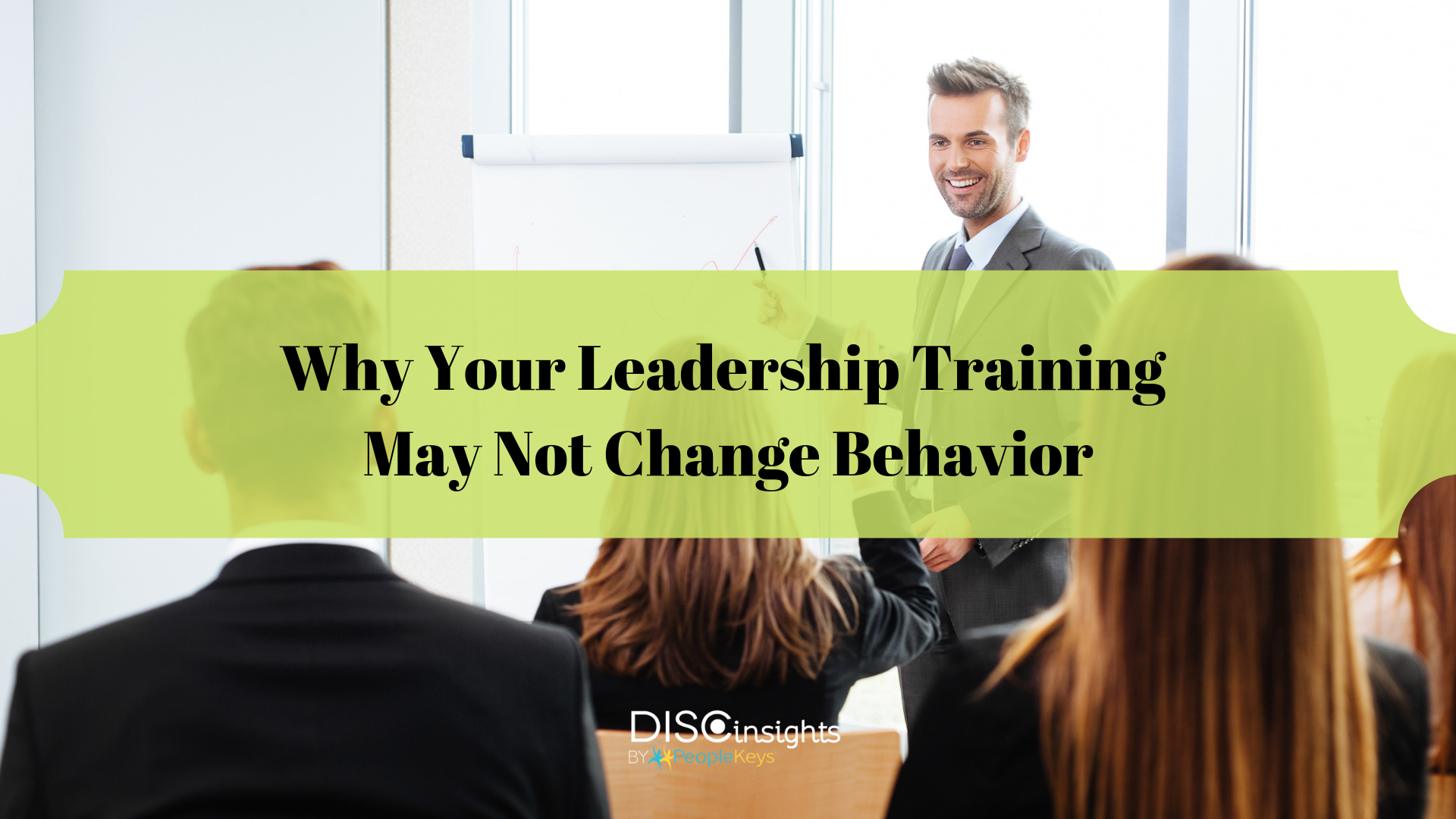- SHOP BY PRODUCT
- DISC TRAINING & CERTIFICATION TOOLS
- DISC RESOURCES
- BLOG
- SHOP BY PRODUCT
- DISC TRAINING & CERTIFICATION TOOLS
- DISC RESOURCES
- BLOG
- ALL ITEMS



As a consultant, I have always been focused on results more than activity. In the case of leadership development, the effort can seem more like an activity that is disconnected from a larger goal. Usually, leadership development includes personality assessment such as DISC or a 4D Report (DISC, T.E.A.M.S, Values and Behavioral Attitudes Index) in order to create a better self-awareness of a person’s default behavior and attitude styles.
In “The Great Training Robbery,” a working paper by Harvard professor Michael Beer and his business partners, Magnus Finnstrom and Derek Schrader, the authors point out despite spending $164 billion on training in 2012, as few as 10% of U.S. corporations were able to show improved financial performance related to the training. Let’s take a look at how your use of PeopleKeys behavioral solutions can be more effective than that.
While the DISC and 4D assessments are not pure training, they are useful pieces in leadership development programs and strategies. The question is, “To what are these programs and strategies linked?” The general goals of training and development are to change behavior and improve performance. What is usually lacking in this discussion is the context of the desired changes in the system that is the organization. Training first and hoping to change the system will not work. In order to change the organization, we have to first look at the current state, compare it to the desired state, and create strategies to get there.
Organizations are made up of resources, information, values (stated or unstated) and processes. These are the major parts of the system. Training people using the DISC assessments may provide enthusiasm for the new self-awareness they experience. However, if you don’t change the organization so there is a need to use this newly found knowledge, they will go back to their old patterns of behavior and attitudes.
So, what can a human resource professional or trainer do?
Start with the senior leadership – of the team, function, business unit or company. Research shows the best approach is to first develop leadership strategies at the top. If the top management is not involved in a new strategy which includes using DISC to improve performance (including using it for themselves), it could be dismissed as the latest fad training.
Here are questions which can help connect DISC, 4D, and other behavioral solutions to a larger strategy:
These answers can usually be found in the resources, processes, and information of an organization. For example, what prevents information from being shared? How are resources shared? What are the limits of the current processes to deliver on our commitments? A well-defined problem is half solved.
Once you have uncovered the gaps and created a new strategy, how will it be clearly communicated to everyone? How will you know if they understand it? How will it be measured over time? This is key because if any manager is unclear about the strategy and the role they play in it, they will revert to old familiar ways.
Aligning desired individual values with the organization’s values goes a long way toward improving cohesion and cooperation. This is where you can start to link tools such as the 4D and DISC assessments to performance. For future hires, predictive assessments can also tell you how someone may fit with your organization and its values.
These answers will provide the backbone of new, “ideal” leadership profiles. This is where the true value of assessment programs can add incredible value to current staff. Once everyone is aware of their styles, and the desired profiles, they can work toward leveraging strengths and addressing areas of growth to create the development path.
Notice I used the term “assessment program” above. Just using the DISC as a one-time “nice-to-know” tool misses the mark. How will this be measured and followed up on? Adding relevant sections to formal reviews, incorporating the progress into monthly one-on-one sessions, or using a professional coach or peer group to reinforce the learning are ways to build success and improve both personal and organizational performance.
Don’t let your use of personality assessments like DISC become a sad statistic. Linking them to performance strategies, leadership profiles, and corporate values will help you be seen as a trusted adviser rather than an assessment provider.
Do you need leadership consulting or training within your organization?

© PeopleKeys. All Rights Reserved
WORKING DAYS/HOURS
Mon - Fri / 8:30AM - 5:00PM EST
